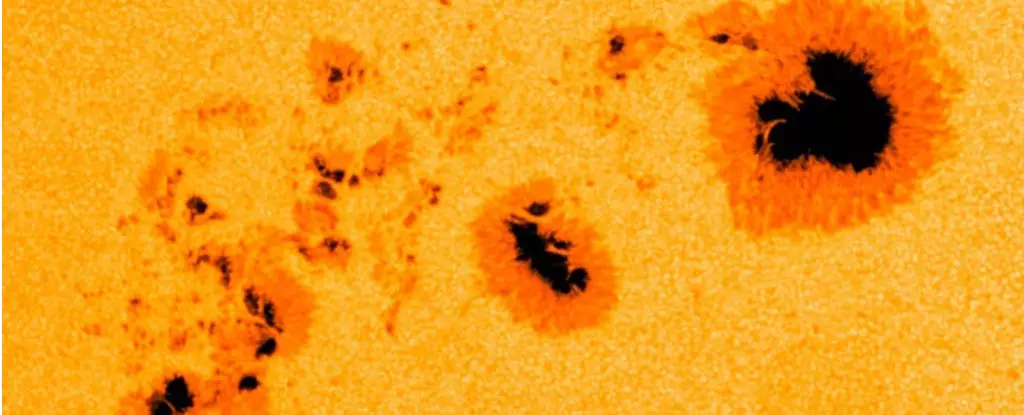The sun is more than just a celestial body; it has been a pivotal player in the history of life on Earth and a source of fascination for humanity for millennia. Throughout history, civilizations have revered the sun as a giver of light, heat, and life, underscoring its essential role in our existence. This article delves into the intricate relationship between solar phenomena—specifically sunspots, solar flares, and coronal mass ejections—and their profound impacts on our planet.
From the time when ancient civilizations first observed the sun rising in the east and setting in the west, its influence has been undeniable. Its rays awaken dormant plants in spring, leading to nourished crops and prosperous harvests. Likewise, the sun’s light has inspired mythology, art, and an understanding of nature across cultures. Beyond its elemental role in our ecosystem, the sun possesses intrinsic properties of magnetism and mystery that have fascinated scientists for centuries.
In 1600, William Gilbert—an early pioneer in the scientific exploration of magnetism—proposed that the Earth functioned as a large magnet. This groundbreaking idea laid the groundwork for subsequent studies into the sun and its magnetic fields. Much later, in the mid-20th century, American astrophysicist George Ellery Hale advanced our understanding further. By employing the largest telescope of his time, he identified highly magnetic areas on the sun, known as sunspots, which could unleash immense energy far stronger than Earth’s magnetism.
The story of sunspots can be traced back to the 17th century when Galileo Galilei utilized a refracting telescope to document these dark patches on the star’s surface. Contrary to the notion of a flawless sun, Galileo’s observations revealed an astonishing reality—an ever-changing surface with its own dynamics. He noted the cyclical nature—indicating the sun rotates and that sunspots undergo transformation in size and impact over time.
Despite this early interest, a significant gap in sunspot activity occurred during the so-called Maunder Minimum (1645-1715), when observers recorded almost no sunspots. This period left many to wonder about the sun’s behavior, culminating in a resurgence of sunspot activity and its recognition as part of an 11-year solar cycle. Throughout the centuries, the sun’s activity has fluctuated, influencing not just science but also agricultural practices and climate on Earth.
The turning point in our understanding of the relationship between solar activity and earthly phenomena came remarkably late in the 19th century. In 1859, Richard Carrington, an amateur astronomer, famously sketched what would later be termed a solar flare. This bright flash was not just an astronomical curiosity; it would trigger a worldwide aurora and significant disruptions to telegraph systems, marking the onset of a new era of understanding.
This singular event, known as the Carrington Event, drew attention to the solar-terrestrial relationship—a connection few truly understood at the time. With the historical perspective lay the groundwork for modern investigations into solar magnetism. Hale’s subsequent discoveries in the early 20th century solidified the link between solar and terrestrial phenomena, establishing that the sun’s magnetic fields were the key players in these cosmic events.
At the heart of the sun’s systematic behaviors lies the complex interaction of solar magnetism. Sunspots act as reservoirs of magnetic energy, rendering these regions cooler and darker compared to their surroundings on the photosphere. Under the right conditions, the magnetic energy stored within these spots can be released explosively, producing the flares that Carrington witnessed or the coronal mass ejections (CMEs) that can traverse vast distances in the solar system.
CMEs are colossal clouds of gas propelled into space from the sun’s surface, carrying significant magnetic fields. If directed toward Earth, they can interact violently with our planet’s magnetic field, leading to geomagnetic storms. Such events have the potential to disrupt modern technology, affecting communication and power grids. The threat posed by these solar storms, particularly as we approach predicted peaks in sunspot activity, has reignited discourse regarding our vulnerability in the face of cosmic forces.
Today, we find ourselves at a unique juncture of heightened solar activity, experiencing an increase in both sunspot numbers and magnetic storms. With predictions suggesting that we could face intense events similar to the Carrington Event once again, the interaction between beauty and danger becomes increasingly pronounced. Our planet, always at the mercy of solar whims, may find itself witnessing spectacular auroras while simultaneously grappling with the repercussions of solar activity on our technology and daily life.
The sun remains a formidable and often-underappreciated force in our technological era. As scientists continue to unravel its mysteries, humanity’s fascination with the sun only deepens, intertwining science, history, and our ongoing quest to comprehend our place in the universe. The symbiotic dance between the sun and Earth, filled with opportunities for exploration and awe, is destined to captivate generations to come.


Leave a Reply